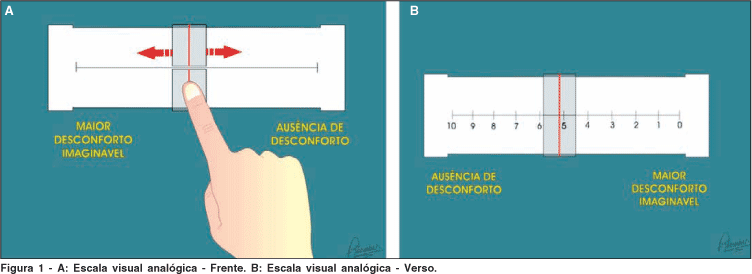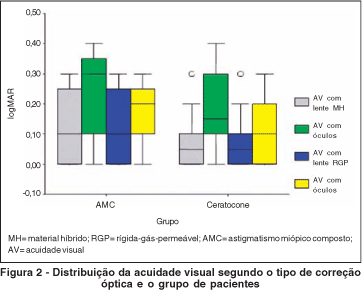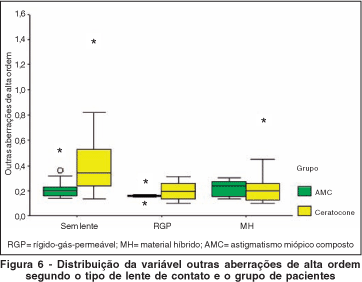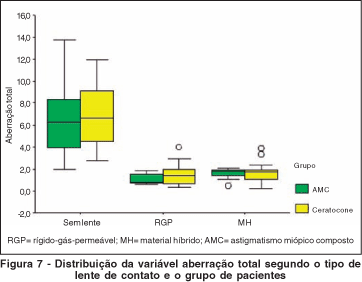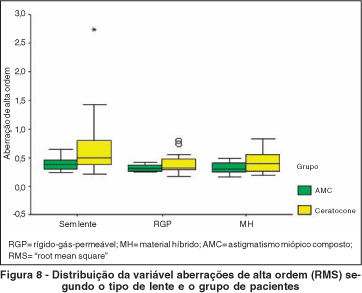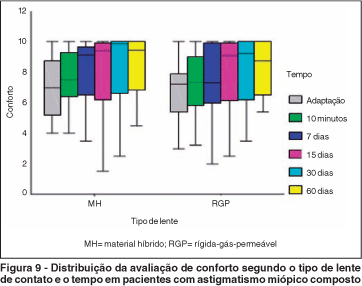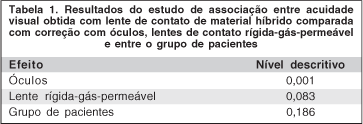PURPOSE: To evaluate comfort and visual performance in relation to two different used contact lens types: hybrid material (HM) and rigid-gas-permeable (RGP), in patients with regular myopic astigmatism and with keratoconus. METHODS: A randomized, double masked, prospective study of 22 patients with the diagnosis of myopic astigmatism (8 with myopic astigmatism and 14 with keratoconus) was conducted. Fifteen patients were female and 7 were male, and mean age was: 32.13 ± 8.12 years. In one of the eyes a rigid-gas-permeable contact lens was adapted (DK 30), and in the other a hybrid material contact lens was adapted (DK 23). All patients were submitted to the following tests: measurement of comfort level by means of the analogical visual scale, tear break-up time, best corrected visual acuity with the Bailey-Lovie scale adapted for 4 meters, functional acuity contrast test (FACT) and wavefront analysis. RESULTS: In relation to comfort, there was no association with the evaluated contact lens type (p=0.350). There was a variation in comfort level during the first 7 days. The visual acuity increased between the 7th and the 15th day of adaptation. Visual acuity stabilized right after this period. The visual acuity did not show differences in relation to the studied lens type. It was verified that there was no difference in the tear break-up time (p=0.989) in relation to the studied lenses type and there was a decrease in the tear break-up time (p=0.001) when we compared the measurement before the use of the lenses and 2 months after their use. There was no difference in contrast sensitivity in the used lens type and between each type and the use of glasses (p<0.047). High order aberrations decreased significantly when comparing patients with and without contact lenses, except for spherical and coma aberrations (p=0.394). CONCLUSION: Comfort and visual performance when comparing hybrid material and rigid-gas-permeable contact lenses did not show any significant difference in the patients or when compared separately in regular myopic astigmatism and in keratoconus patients.
Contact lenses; Keratoconus; Myopia; Astigmatism; Contrast sensitivity


